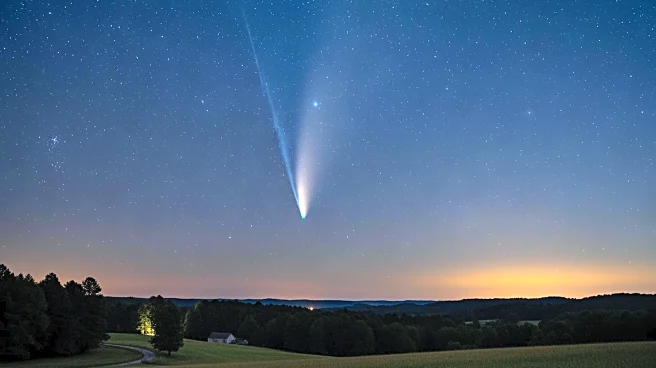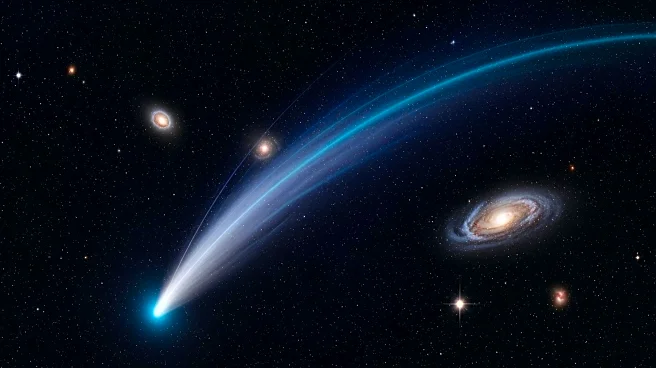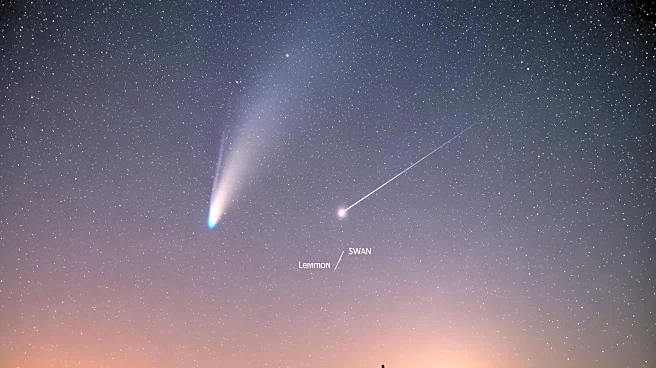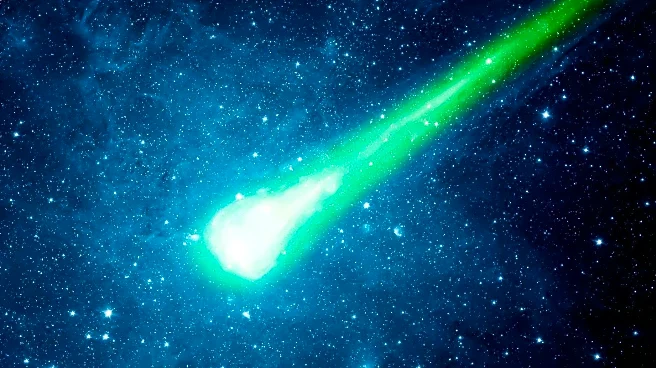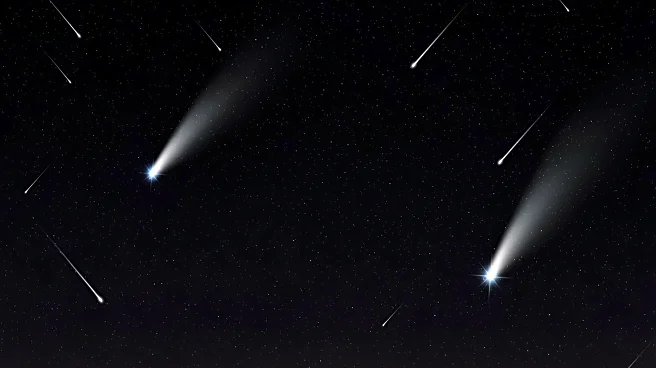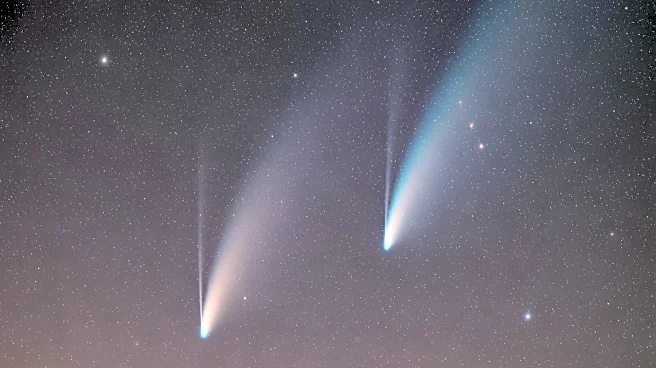What's Happening?
Comets Lemmon and SWAN are visible in the night sky over North Carolina, providing a rare celestial event for stargazers. Comet Lemmon, known for its green hue, is best viewed in the northwest sky after
sunset, while Comet SWAN is visible in the southwest sky, primarily from the Southern Hemisphere. Both comets are making a close approach to Earth, with Lemmon passing within 56 million miles and SWAN at 24 million miles. The comets will peak in brightness between October 20-21, coinciding with the Orionid meteor shower and a new moon, enhancing visibility.
Why It's Important?
The visibility of these comets offers a unique opportunity for public engagement with astronomy, potentially inspiring interest in science and education. For North Carolina residents, the event provides a chance to experience a cosmic spectacle that occurs infrequently. The comets' approach also underscores the importance of astronomical research and observation, contributing to scientific understanding of cometary behavior and composition. Such events can foster community interest in space exploration and the natural world.
What's Next?
Stargazers can continue to observe Comet Lemmon and SWAN throughout October and into November. The peak brightness is expected around October 31-November 2, offering optimal viewing conditions. As the comets move away from Earth, astronomers will analyze data collected during their approach to enhance knowledge of comet dynamics and interactions with solar winds. Public interest may lead to increased participation in astronomy-related activities and events.
Beyond the Headlines
The appearance of these comets may prompt discussions on the role of space exploration in scientific advancement and the allocation of resources for astronomical research. Ethical considerations regarding the prioritization of space missions versus other societal needs could arise, as the public weighs the benefits of scientific discovery against other priorities.
